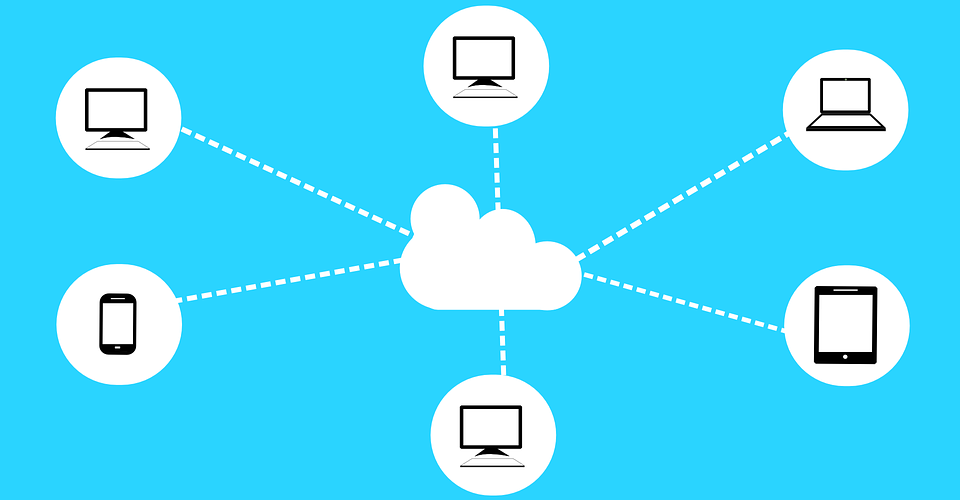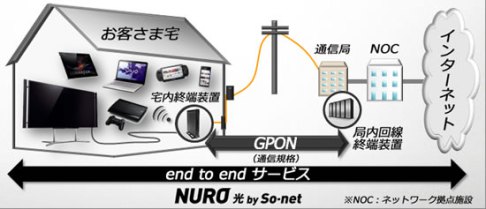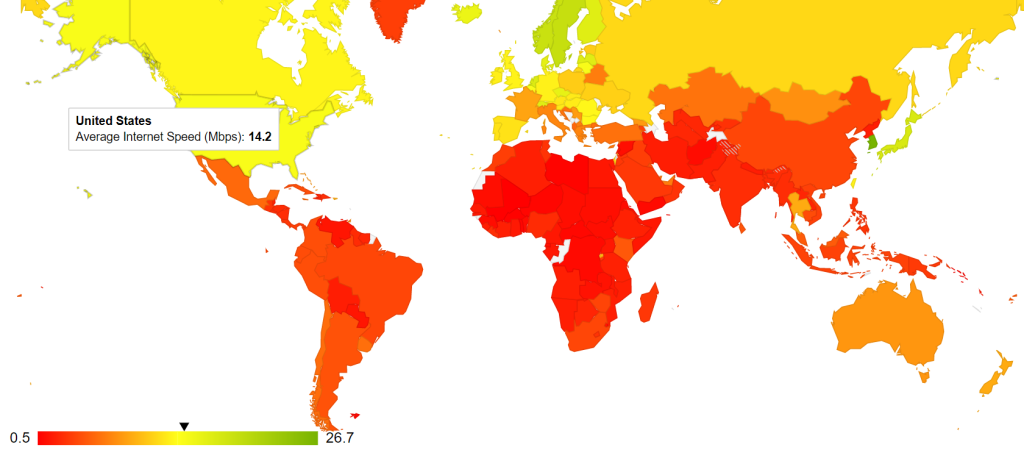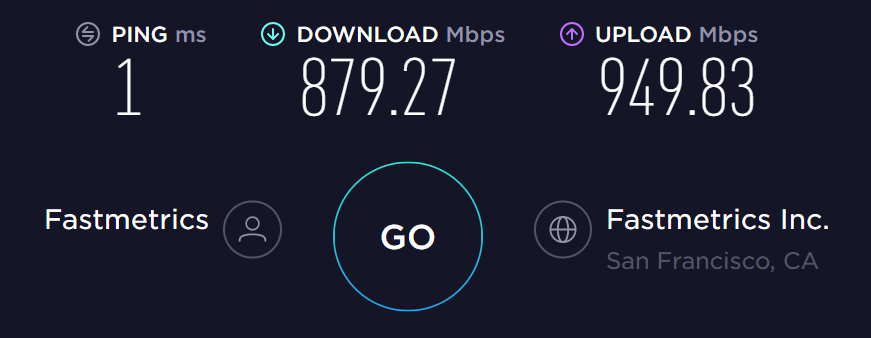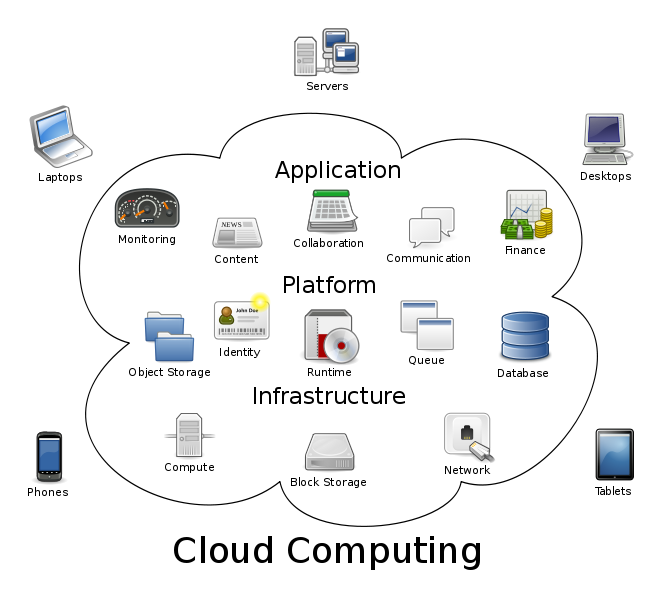Dedicated Internet Access Services For Business
Not all internet connections are equal. Especially when considering the advantages of dedicated internet access services. You’ve likely connected to public WiFi before, only to become frustrated with completing simple online tasks, like browsing or sending an email. Then you know the costs associated with a slow internet connection and shared bandwidth.
The stakes only increase when it comes to the quality of your business internet connection. In today’s digital world made up of eCommerce businesses, video conferences, 4K streaming and countless terabytes of cloud computing storage — dedicated internet access through a managed Internet Service Provider can make all the difference.
A slow connection is just one of the issues that can be shored up by taking advantage of a good managed internet service. The right solution will provide high-speed, dedicated internet access to your business, as well as better customer support, increased reliability, and better security.
What Is Dedicated Internet Access (DIA)?
Dedicated Internet Access (DIA) guarantees that your company is always receiving the maximum bandwidth that you’re paying for. Another popular option is paying for a “shared” connection, where the internet speed advertised in the package you purchased, is the maximum (not average) speed your company can receive.
Since a shared connection means you’re sharing your bandwidth with other people, your internet speed will fluctuate. Speeds can be unpredictable throughout the day and during peak usage times. Essentially, it all depends on the internet provider’s network traffic. During times of high use or network congestion, some ISPs may also slow down your connection in what is known as internet throttling. All these issues are avoided with dedicated internet access, as your company doesn’t have to share bandwidth with anyone, ever. It is a dedicated connection with dedicated bandwidth.
Dedicated Internet Access Explanation
When we think about internet, we don’t think about what type of connection we have. We simply expect fast, reliable service 24-7. However, not all internet connections are created equal. Today, many businesses operate on inexpensive shared internet circuits. On a shared network, if you’re trying to upload time-sensitive files while your peers are streaming data, you’re going to struggle with slow internet speeds and productivity. Because shared circuits equal shared bandwidth.
Businesses such as car dealerships, hotels, medical practices, real estate offices and banks can’t afford inefficient bandwidth and downtime, thus most opt for Dedicated Internet Access, (DIA). Dedicated circuits provide internet to a single location, meaning bandwidth is only available to the circuit owner. Therefore businesses with DIA actually receive the bandwidth they sign up for. No sharing.
Symmetric Upload & Download Speeds
If you’re considering a shared internet access agreement, understand that download speeds are going to be significantly faster than upload speeds. This is also one of the key differences when comparing internet services like DSL vs Cable vs Fiber. Shared internet access is set up this way. Not because Internet Service Providers are trying to take advantage, but because there is usually a higher demand from people using private networks for downloading versus uploading.

Nothing is worse than trying to close a deal via video conference, only to have a bad feed or choppy connectivity at a crucial moment. However, with dedicated internet access, you won’t have that problem. Download speeds should be very close to symmetric. Matching your upload speeds 24-hours a day, seven days a week.
Improved Network Security
Cyber security for your business should be of utmost importance. Especially if you handle any sensitive data—such as employees’ or clients’ personal information. Additionally, cyber security is an essential part of your business’s financial security.
One way to boost your security is by using dedicated internet access. By not having to share your internet connection with those outside of your organization, strengthen your overall cyber security and insulate your network against breaches. When you have dedicated internet access, you can worry less about the threats from other networks. This allows you to better allocate your business’s resources toward tackling other weak links in your digital security.

In addition to the basics, some internet service providers will offer additional security features with your dedicated internet access. This will often include firewall options to help block malicious code, viruses and other intrusions. As well as enhanced security services to help you identify spam, malware, and phishing scams. Identifying and neutralizing these threats is of utmost importance, as they can interrupt business or lead to sensitive data being stolen.
Dedicated Internet = Better Throughput
Ever get slow internet speeds, despite an internet speed test saying your bandwidth is high? Then you already know about the importance of throughput. It’s a bit technical, but the reality is that the bandwidth your company buys from an Internet Service Provider is not the circuit’s actual throughput. That number is just the bandwidth at which the circuit accesses the provider’s backbone network.
Unfortunately, this means that once your traffic hits the network, it can only move as fast or as slow as the network will allow. The best way to think about this is as if you’re commuting from work during rush hour. If the backbone network is over-subscribed to, it’s like everyone trying to get out of the city. On the same freeway. At the same time. Sure, the speed limit is 60 mph. You can zoom up the on-ramp from your place of business. But once you hit the freeway, things start moving at a painful crawl.

Generally, dedicated internet access customers are kept on a high-capacity, under-subscribed backbone network. Shared internet connections often run on a backbone network that’s cluttered with traffic — slowing everything down.
You often won’t see this advertised as part of the package when you’re looking into purchasing dedicated internet access. However, it’s something you’ll want to follow up with your sales rep about. Ensure you’re getting the most out of your network.
Scalable Internet Access
If your business is growing, the ability to scale up your resources as you expand is vital. With a dedicated internet connection, it’s easy to move the sliding scale of what internet services you’re paying for, to match your needs. There’s no need to pay for internet you don’t use. Then again, you can always just opt for unlimited data.
Dedicated Reliability & Improved Customer Support
One of the biggest advantages of managed and dedicated internet service, is that you most likely won’t need to utilize the 24/7 customer support that often comes with it. Dedicated internet access service plans should come with a Service Level Agreement (SLA). This agreement guarantees circuit up time. Typically, an SLA document also details a minimum time to resolve connectivity issues (if any), to restore complete service.

Dedicated internet access service should be accompanied with high-end, reliable network equipment. This further reduces connectivity issues.
Final Thoughts: Choosing The Right Dedicated Internet Access Plan For Your Company
Whether you’re in the Bay Area or elsewhere, business internet access needs should not be underestimated. Depending on your company, symmetrical upload and download speeds provided via a managed internet service and better throughput — can be absolutely essential to your success.
Additionally, the security risk of a shared internet package may not be worth the savings. The actual costs and the damage to your brand’s reputation from a data breach could be astronomical. (Depending on the size of the breach and the sensitivity of the information stolen). When it comes to cyber security, it is always better to be safe than sorry.
The bottom line is that having reliable and dedicated internet access can increase the productivity of your workforce, as well as improve your bottom line. Have more questions about what dedicated internet access or managed services can do for your business? Contact Fastmetrics today.
About Fastmetrics, Inc. Building & Business ISP
Since 2002, Fastmetrics is the Bay Area’s only dedicated business ISP. We provide telecommunication services in California and the San Francisco Bay Area. Reliable service – backed by better live and local support. From install to 24-7 proactive monitoring, get treated like a VIP customer. Not a number by a faceless call center. We specialize in managed business internet and phones, dedicated high speed business fiber internet, business WiFi, SIP voice solutions / UCaaS and managed network services. We are a Microsoft and Cisco Meraki Partner. Our team are Certified Cisco Specialists, Ubiquiti Enterprise Wireless Accredited and Polycom Authorized Solution Advisors. We take care of your business network, so you can focus on growth.








